In today's world, where most people spend a considerable amount of time sitting at their desks, ergonomic office interior design furniture has become increasingly important. Proper ergonomic design principles are essential to ensure that office furniture is not only comfortable but also safe for extended periods of use. Here are some of the key ergonomic design principles to consider when selecting office interior design furniture:
1.Adjustability:
An ergonomic office interior design chair should be adjustable in height, armrests, and backrest. The height should be adjustable to allow the user's feet to be flat on the ground while their knees are at a 90-degree angle. The armrests should be adjustable to allow the user's arms to be parallel to the desk, and the backrest should be adjustable to support the natural curve of the spine.
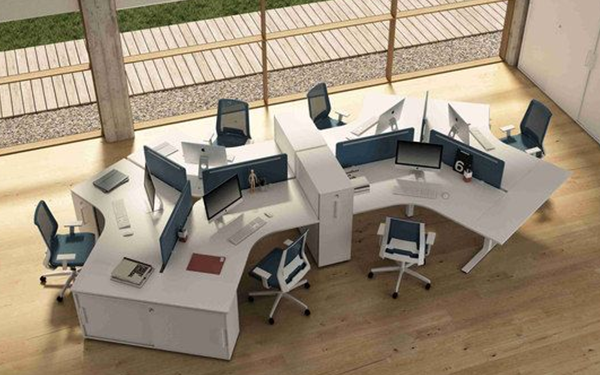

2.Lumbar support:
A chair with proper lumbar support can help prevent lower back pain. The lumbar support should be adjustable to fit the user's spine curvature.
3.Seat depth and width:
A chair's seat depth and width should be adjustable to fit the user's body size. The seat should be deep enough to allow the user's back to rest against the backrest while maintaining a few inches between the back of their knees and the seat. The seat width should be wide enough to allow the user to sit comfortably without being cramped.
4.Desk height:
The desk height should be adjustable to allow the user to work comfortably without hunching over or reaching up. The desk height should allow the user to keep their elbows at a 90-degree angle while typing, and the computer monitor should be at eye level.
5.Footrest:
If the user's feet do not rest flat on the ground when seated, a footrest can help improve posture and reduce the risk of lower back pain.
6.Keyboard tray:
A keyboard tray can help keep the user's elbows at a 90-degree angle while typing, reducing the risk of wrist and shoulder strain.
7.Lighting:
Proper lighting is essential for reducing eye strain and fatigue. The office should be well-lit, and the computer monitor should be positioned to reduce glare.
In conclusion, ergonomic office interior design principles are essential for selecting comfortable and safe office interior design furniture. When selecting office furniture, it's important to consider adjustability, lumbar support, seat depth and width, desk height, footrest, keyboard tray, and lighting. By following these principles, you can create an ergonomic office that promotes good posture, reduces strain, and improves productivity.
Office interior design has a significant impact on company culture. A well-designed office can foster collaboration, creativity, and productivity, while also reflecting the company's values and brand identity. Here are some ways in which office interior design can impact company culture:
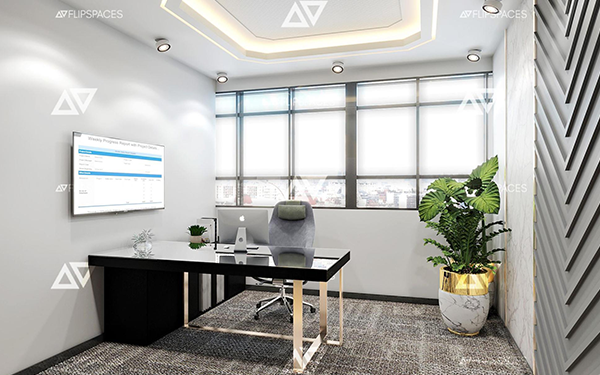
1.Open Layout:
An open office interior design layout encourages collaboration and communication among team members. It also promotes a sense of transparency and accessibility among employees, which can foster a more open and collaborative company culture.
2.Color Scheme:
The color scheme of an office interior design can influence mood and productivity. For example, blue and green are calming colors that can improve focus, while yellow and orange can increase energy and creativity.
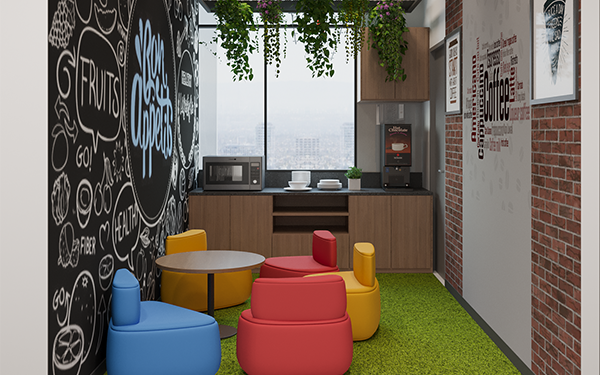
3.Brand Identity:
The office interior design can reflect the company's brand identity and values. Incorporating the company's logo, colors, and brand message into the office interior design can reinforce the company's culture and create a sense of pride among employees.
4.Comfort:
Providing comfortable furniture and amenities in office interior design, such as ergonomic chairs and standing desks, can create a more comfortable work environment. This can improve employee well-being and productivity, while also demonstrating the company's commitment to employee satisfaction.
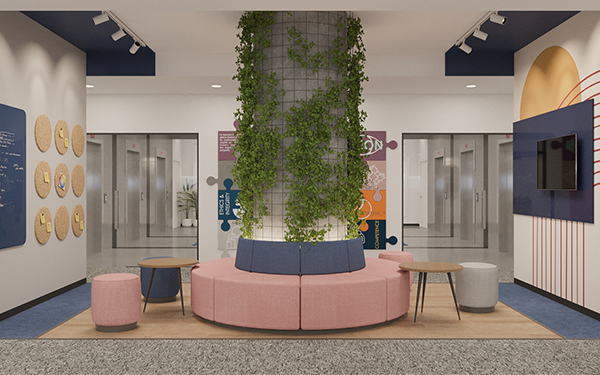
5.Nature:
Incorporating natural elements, such as plants or natural light, into the office interior design can promote a sense of calm and well-being among employees. This can improve mental health and reduce stress, while also creating a more pleasant and inviting work environment.
6.Flexibility:
A flexible office interior design can allow for different work styles and preferences, such as quiet workspaces, collaboration areas, or standing desks. This can demonstrate the company's commitment to employee autonomy and work-life balance.

7.Art and Decor:
rtwork and decor can add personality and visual interest to the office interior design. This can create a more welcoming and inspiring work environment, while also reflecting the company's culture and values.
In conclusion, office interior design plays a critical role in shaping company culture. By incorporating elements that foster collaboration, creativity, and well-being, and that reflect the company's values and brand identity, an office interior design can create a positive and productive work environment that benefits both employees and the company as a whole.
As sustainability becomes an increasingly important consideration in every aspect of our lives, businesses are looking for ways to incorporate sustainable office interior design principles into their office spaces. Here are some ways to do so:
By following these tips, you can create a more comfortable and productive work environment by optimizing the acoustics in your office interior design.
When designing a creative office interior design space, there are several unique features to consider that can enhance productivity, creativity, and overall employee satisfaction. Here are some of the most important features to keep in mind:
1.Use eco-friendly materials:
When designing an office interior design space, it's important to consider the materials used. Opt for materials that are eco-friendly, renewable, and recyclable. This includes things like recycled flooring, reclaimed wood, and low-VOC paints.
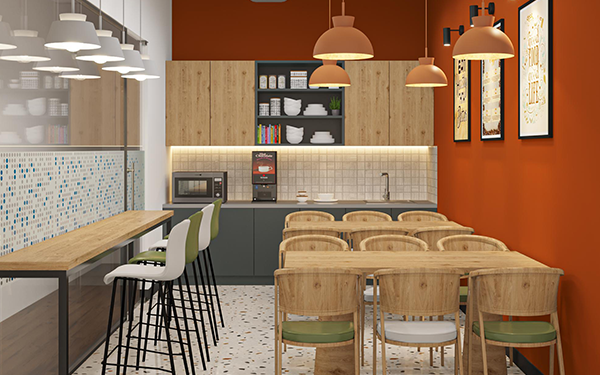
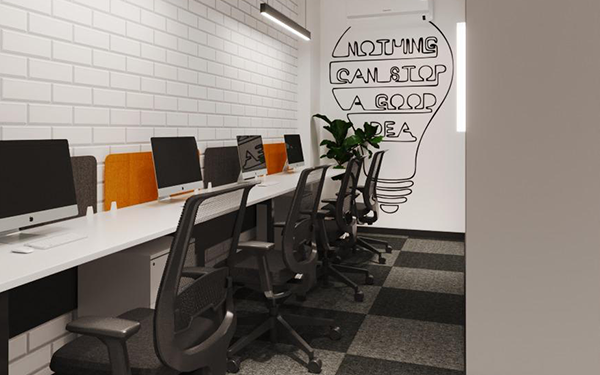
2.Implement energy-efficient lighting:
Lighting can account for a significant portion of a building's energy use. By using LED lights or other energy-efficient lighting options, businesses can reduce their energy consumption and costs.
3.Invest in green technology:
Modern technology can be a great way to reduce waste and energy use in an office interior design space. For example, consider investing in smart thermostats or motion-sensing lighting systems to help reduce energy use.
4.Incorporate natural elements:
Bringing nature into an office interior design space can have a positive impact on both employees and the environment. Incorporate plants, natural light, and natural ventilation to improve air quality and create a more pleasant work environment.
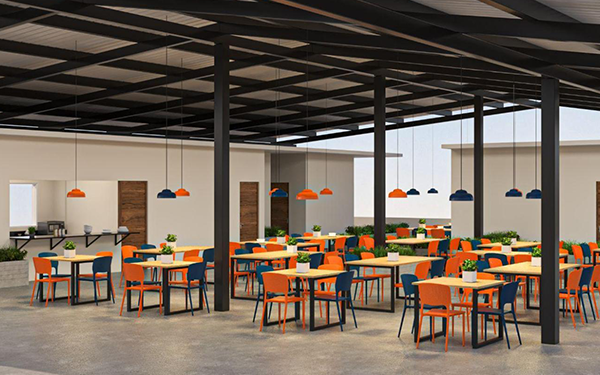
5.Reduce waste:
Waste reduction should be a key consideration in sustainable office interior design design. Implement recycling programs, reduce paper use, and encourage employees to use reusable water bottles and coffee cups.
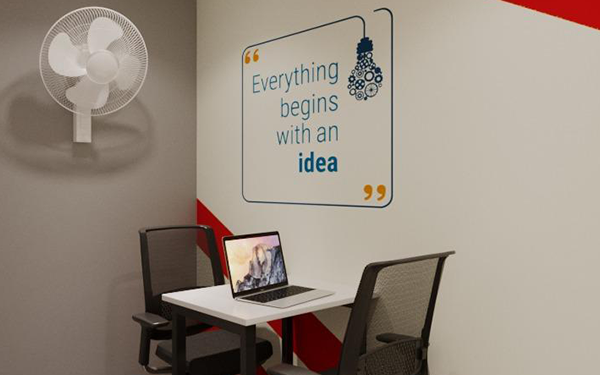
6.Choose sustainable furniture:
Office furniture can be a significant source of waste. Choose furniture that is made from sustainable materials and can be recycled or repurposed when no longer needed.
7.Consider the office's location:
The location of an office can have a significant impact on its sustainability. Look for buildings that are located near public transportation, bike lanes, or walkways, and consider installing bike racks and showers for employees who choose to commute by bike.
By incorporating sustainable office interior design principles into an office space, businesses can reduce their environmental impact, lower their operating costs, and create a more pleasant work environment for employees.
Office interior design is an important aspect of creating a productive and enjoyable work environment. One element of office design that often gets overlooked is the use of color. However, color can play a significant role in the look, feel, and function of an office space. In this blog, we will explore the role of color in office interior design and how it can be used effectively.
The Role of Color in Office Interior Design
Color has the power to influence our emotions, moods, and behavior. When it comes to office interior design, color can affect employee productivity, creativity, and even their health. Here are some of the ways color can impact office design:
1.Mood and Emotion:
Color can create a mood or emotion in a space. For example, blue is often associated with calmness and productivity, while red can evoke feelings of energy and passion. Choosing colors that align with the desired mood of a workspace can have a significant impact on employee well-being.
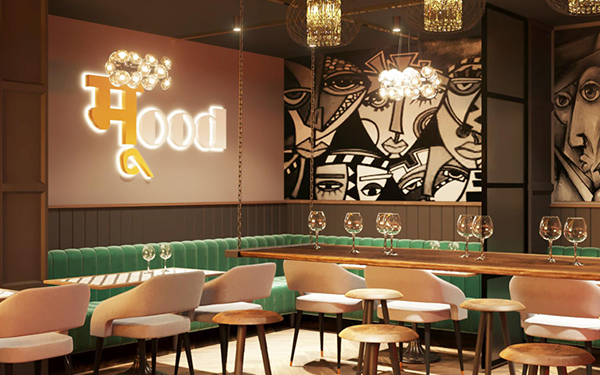
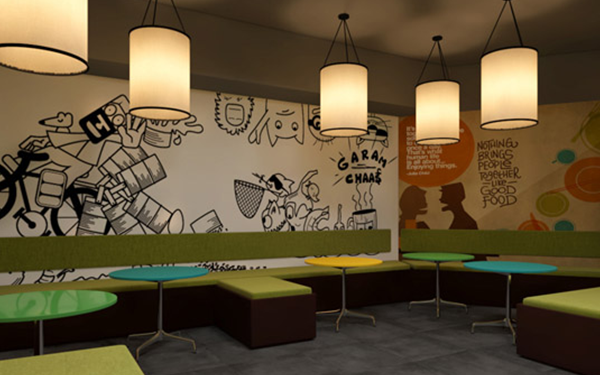
2.Perception of Space:
Color can also impact how large or small a space feels. Lighter colors tend to make a space feel more open and airy, while darker colors can make a space feel smaller and more intimate. This can be particularly important in smaller office interior design spaces where maximizing the perceived size of the area can be beneficial.
3.Branding:
The color scheme of an office interior design can also be used to reinforce the brand of a company. Choosing colors that match or complement a company's branding can help create a cohesive and recognizable environment for both employees and visitors.
4.Health:
The color of an office can also have an impact on employee health. For example, green can promote a sense of calmness and well-being, while yellow can promote happiness and positivity.
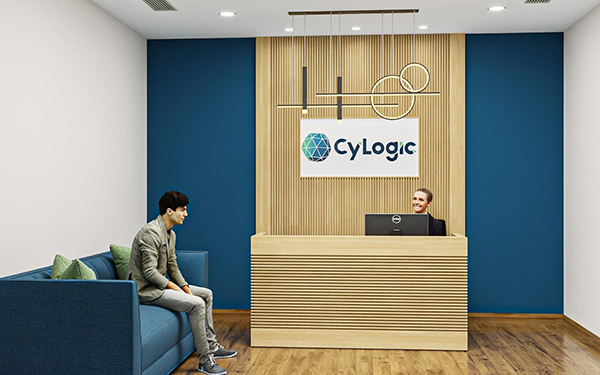
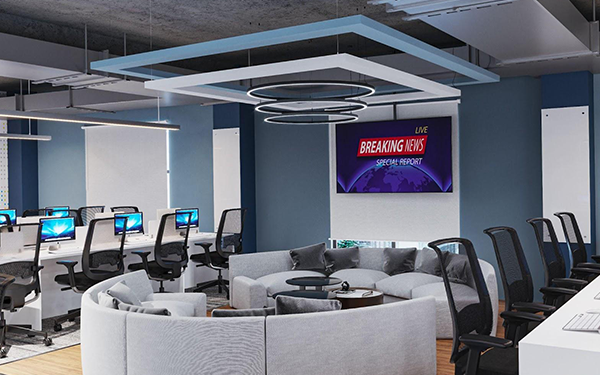
Using Color Effectively in Office Interior Design
Now that we understand the impact that color can have on an office environment, let's explore some ways to use color effectively in office interior design:
1.Consider the Purpose of the Space:
When choosing colors for an office interior design space, it's important to consider the purpose of the area. For example, a break room may benefit from bright and cheerful colors, while a conference room may benefit from more calming and neutral tones.
2.Choose a Color Palette:
Once the purpose of the space is determined, it's helpful to choose a color palette that aligns with the mood and brand of the company. Using two or three colors throughout the space can create a cohesive and visually appealing environment.
3.Use Accents:
While a neutral color palette can create a calm and professional environment, incorporating pops of color through accent pieces such as artwork, furniture, or plants can add visual interest and personality to the space.
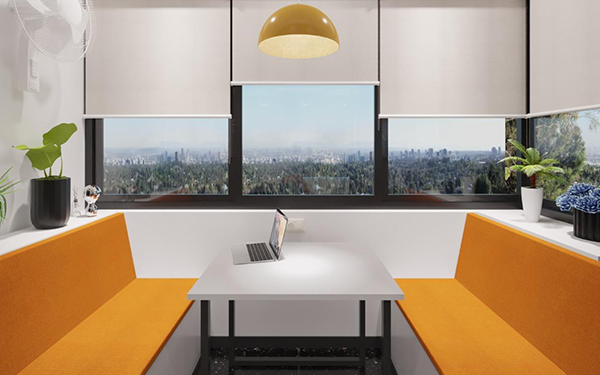
4.Pay Attention to Lighting:
The color of a space can change depending on the lighting. It's important to consider the lighting of the space when choosing colors to ensure that they look the way they are intended to under various lighting conditions.
In conclusion, color plays a significant role in office interior design, affecting employee well-being, productivity, and creativity. When used effectively, color can create a cohesive and enjoyable work environment that promotes employee satisfaction and success. By considering the purpose of the space, choosing a color palette, using accents, and paying attention to lighting, the office interior design can create a space that is both functional and aesthetically pleasing.